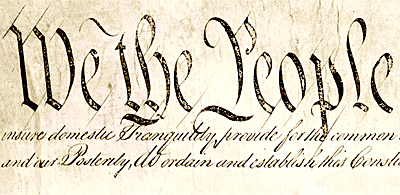Toppling Rock Icons like Confederate Statues
On Nov. 3, 2021 the New York Times published Can We Separate the Art From the Artist?, an opinion piece by their regular columnist Jennifer Finney Boylan. It compared classic rock performers like Elvis Presley and Jerry Lee Lewis to the statues of Confederate generals, implying it was time to topple classic rockers for their politically incorrect behavior. Boylan put it this way:
“The past several years have seen a reassessment of our country’s many mythologies—from the legends of the generals of the Confederacy to the historical glossing over of slaveholding founding fathers. But as we take another look at the sins of our historical figures, we’ve also had to take a hard look at our more immediate past and present, including the behavior of the creators of pop culture. That reassessment extends now to the people who wrote some of our best-loved songs.”
Boylan declared yet another front in the ever expanding culture war. Bring out the long knives, we’re going back to the 50s, 60s, and 70s to find objectionable lyrics and horrid deeds committed by long dead performers so we can expunge them from history.
I do not entirely disagree with Boylan’s opinion piece, just 99.99% of it. The cloaked advocation of censorship intimates that defacing and toppling statues is a very good thing. That alone makes the statement odious to me as an artist and defender of the First Amendment to the US Constitution. Artists should be well aware of how detrimental censorship can be, not just to individual artists, but to society as a whole. America is supposed to be the land of liberty, not the land of purges, repression, and censorship.
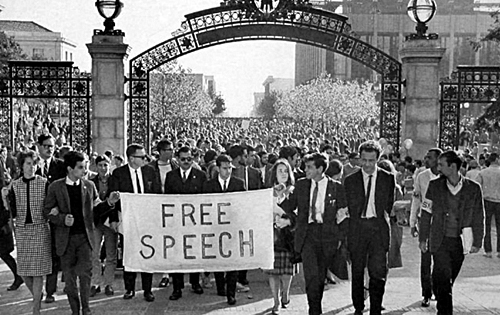
I was eleven-years-old in 1964 when the Free Speech Movement began at the University of California, Berkeley. As a kid I admired the bravery and high-mindedness of those students. The movement electrified my generation, and made an everlasting impression on me. I was propelled into a lifetime of advocating and defending human and civil rights.
Back in 1964 leftwing students carried banners emblazoned with the words, “Free Speech.” But today’s leftwing students have burned placards reading “Free Speech.” I have a sneaking suspicion Boylan stands with the latter, but uses less inflammatory language to describe the position.

Boylan asserts we have seen a “reassessment” of “the generals of the Confederacy” and “slaveholding founding fathers.” But what does removing Abraham Lincoln as the name of a public school in San Francisco have to do with this reassessment? How do “activists” defacing the Shaw 54th Regiment Memorial in Boston Commons with anti-police graffiti have anything to do with taking “another look at the sins of our historical figures”?
Black Lives Matter supporters in Wisconsin tore down a bronze statue of Norwegian-American abolitionist Hans Christian Heg, decapitated it, dragged it through the streets, and tossed it into Lake Monona. Heg was an anti-slavery activist who joined the Union Army to free the slaves. As the colonel of the all-Scandinavian 15th Wisconsin Volunteer Regiment of the Union Army, he was killed in 1863 fighting the Confederates at the Battle of Chickamauga. Yeah, dragging the broken memorial statue of Hans Christian Heg through the streets was an essential “reassessment.”

Perhaps Boylan and followers think the destruction of the Hans Christian Heg bronze statue was merely “collateral damage.” This so-called “reassessment” has defaced, toppled, and destroyed dozens of historic public sculptures that had nothing to do with Confederates or slave masters. Nevertheless, you can’t build a better world without breaking a few eggs, eh Boylan? Welcome to the struggle for “a more just society.”
When Jennifer Finney Boylan wrote of being appalled by the private lives of Elvis Presley and other “disgraced musicians,” I thought of a 1979 punk rock concert flyer in my collection. The cheap xeroxed leaflet announced a gig at the new Masque punk club that operated in smoggy old Los Angeles at the time. Two of the most notorious punk bands in California played the Masque musicale, the Germs and the Dead Kennedys (referred to by fans and foes as the DKs).

The Dead Kennedys had just released their first single, it was titled California Über Alles. It might be said the song was an attack on the type of liberalism represented by Boylan. The ornery song attacking liberals put the DKs on the map, but it might also be the kind of song guaranteed a place on Boylan’s personal list of wrongthink. Apart from the fact the DKs performed a deliriously berserk version of the Elvis song Viva Los Vegas, Presley’s face was featured on the 1979 Masque leaflet in mockery of his “King of Rock ‘n’ Roll” status.
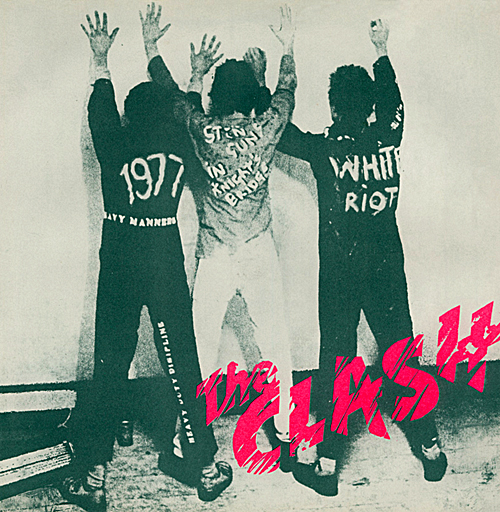
Consider the very first record released by The Clash in March of 1977, it presented two songs; White Riot and 1977. Today’s liberals would condemn White Riot as a “white supremacist” song: “White riot, I wanna riot, white riot, a riot of my own.” 1977 was one of the songs that kicked off the punk rebellion, its refrain was “No Elvis, Beatles, or the Rolling Stones in 1977.” Yet the Clash were not calling for censorship of their musical foes, they were saying, get out of the way.
I attended that riotous 1979 Masque shindig, and between the nihilistic caterwauling of the contentious Germs, the frantic histrionics of the DKs, and the ghostly apparition of the pompadoured dead King, those at the Masque were all shook up. If only Jennifer Finney Boylan had been there.
In the heady days of the late 1970s when punk music was brand new and truly provocative, it received almost zero airplay on commercial radio in Los Angeles, and it got even less attention in the press. At one point nearly all venues in LA closed their doors to punk; this was in essence a form of censorship. But let us skip to 1985 for another long forgotten example of censorship.
In Sept 1985 the US Senate held hearings designed to censor pop music. The hearings were under the aegis of the Parents Music Resource Center (PMRC), a group led by liberal Tipper Gore, co-founder of the PMRC and wife of Democrat Sen. Al Gore. The PMRC released a list called the “Filthy Fifteen,” enumerating some of the performers or bands who had released “objectionable” songs. Prince, Cyndi Lauper, Madonna, AC/DC, Black Sabbath, and Twisted Sister were on the list.
Fully backing the censorious PMRC in the august body was liberal Senator Gore, who testified in their favor. Gore badgered heavy metal rocker Dee Snider of Twisted Sister in a Q and A after the rocker’s testimony. Readers should listen to Snider’s spirited defense of the first amendment, along with the eye-opening anti-censorship statements given by folk singer John Denver and composer extraordinaire Frank Zappa. Those three really understood what was at stake, the same cannot be said of Jennifer Finney Boylan.
Boylan’s Can We Separate the Art From the Artist? presents an age old, and frankly tiresome argument. However, the NYT columnist did offer an untried, newfangled twist to the dispute. Instead of targeting offensive lyrics, Boylan went after the personal sins and immoralities of individual performers. Wow, just think of all the musicians that can be purged for having deficient morals! The gossip blogs will be so busy. But wait, this is not being carried out by someone on the fundamentalist religious right, Jennifer Finney Boylan is a liberal Transgender activist.

In the opinion piece Boylan attacked Johnny Cash, Eric Clapton, Gary Glitter, the Rolling Stones, Don McLean, as well as Elvis Presley and Jerry Lee Lewis.
But why stop there? I am certain at least a hundred names could be added to the registry of the persona non grata. The list of classic rock songs from the 50s, 60s, and 70s construed to be “sexist” or “racist” is too long to cite here.
Figuratively speaking, Boylan fired so many flaming arrows at Don McLean in the opinion piece it almost made me like his American Pie ballad… well, almost.
Boylan recounted the arrest of McLean for suspicion of domestic violence and seemed forlorn the singer was not drawn and quartered in the public square. Let me be clear, I have no sympathy for McLean, that is my 0.1% agreement with Boylan.
Still, the columnist’s telling of McLean’s trouble with the law ends with the snide remark, “His iconic song still plays on the radio,” implying no one should ever hear American Pie again, as if hearing it will cause a male listener to commit sexual violence. Many sophisticated intellectual types—yeah, that automatically excludes me, consider McLean’s American Pie a masterwork.
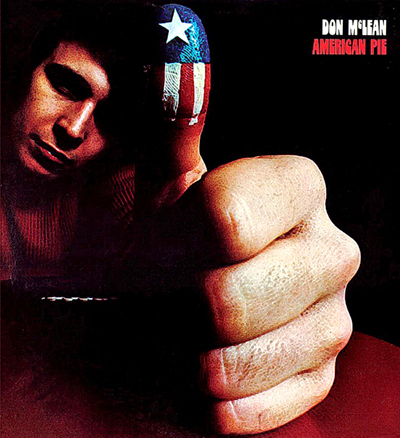
But don’t shoot me, I’m only the piano player. You can take up the wickedness of McLean with the National Endowment for the Arts, which claims American Pie is one of the 20th century’s greatest songs—and the Library of Congress, which chose the song for preservation in the National Recording Registry. So, when will progressives blitz those institutions for not being, well, progressive enough?
And what about today’s dominant rap genre, is there a more misogynist music out there? Snoop Dogg, the heavyweight champ of sexist degrading lyrics once rapped: “Bitches ain’t shit but hoes and tricks, lick on these nuts and suck the d**k, gets the f**k out after you’re done.”
Snoop now has his own wine label, Snoop Cali Red, made in partnership with Australian vintner 19 Crimes (apt name). The wine can be found in grocery stores serving bourgeois cliental. Even CNN recently raved about original gangster sommelier Snoop Dogg and his stinking inferior plonk. Don’t even ask me about Cardi B and WAP. Where is Boylan’s critique?
The best way to handle music you find abhorrent and loathsome is… do not listen to it, do not purchase it, ignore it. The same goes for visual art, literature, movies, and any other creative endeavor. We still live in a free society—even though it’s looking rather threadbare these days, so behave like you are autonomous and unfettered. A free people produce and consume whatever cultural output they like.
Boylan’s opinion contained this gem: “I want to live in a world where I can be moved by art and music and literature without having to come up with elaborate apologies for that work or for its creators.” Oh for goodness sake Boylan, grow up will you.
Humanity is imperfect and flawed. The history of the world is replete with composers, painters, writers, and many other creative types who struggled with a dark side—some even nurtured it. The Italian Baroque painter Caravaggio was a street brawler who carried a sword and murdered a man in a fight. German composer Richard Wagner was an anti-Semite who changed the face of Western music. America’s virtuoso jazz trumpet player Miles Davis beat his wives. Should we burn all of their works? We will never live in the utopian world Boylan longs for. It would be more profitable for the columnist to begin a new career writing those “elaborate apologies” for the world’s ill-natured artists and their errant works.
The biggest problem confronting Boylan comes in identifying potential wrongdoers. I mean, aside from bad press or arrest, how do you single out a miscreant musician? Remember, lurking behind grandiloquent lyrics one might find an evildoer. Boylan’s opinion piece ended with this meditation on the problem of reprobate musicians: “Maybe reconsidering those songs, and their artists, can inspire us to think about the future and how to bring about a world that is more inclusive and more just.”
“Reconsidering” songs and artists my foot. This ain’t the Age of Aquarius pal. The people of the world are being silenced through censoring, deplatforming, and shadow banning by tech oligarchs who think they are delivering us to a “more inclusive and more just” world, and you are just fine with that. Except, instead of cruising to paradise we are being coughed up to dystopia.
The Soviet Union knew how to help artists create a “more just” world. By 1932 artists were required to join the communist’s Artists Union, that is, if they wanted to work and exhibit. Artists were vetted on whether they possessed the proper loyalty to communism and displayed a zealotry for uprooting old reactionary ideas. If so, they were allowed to join the union, if not they were forbidden to create, display, or sell artworks. Socialist Realism, a genre that extolled workers and communist leadership, was the only allowable art in the one-party state. The communists did not worry about coming up “with elaborate apologies” for trouble making artists who preferred the old ways… they just sent them to the gulag.
This scheme to bring about a “New Socialist Man” by silencing social democrats, conservatives, nationalists, and religious types who opposed communism, was applied to the Eastern Bloc, the Soviet satellite states of Bulgaria, East Germany, Hungary, Poland, Romania, and Czechoslovakia. Let me tell you a tale of artistic freedom that took place in Soviet occupied Czechoslovakia.
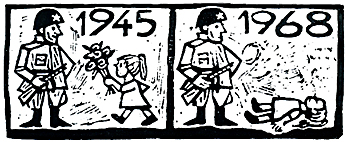
On Jan. 5, 1968, Alexander Dubček became the head of the Communist Party in the Soviet satellite state of Czechoslovakia. He initiated the Prague Spring reforms that relaxed the communist stranglehold on art, speech, media, and travel. The Soviets feared the reforms would undermine the Communist Bloc, so on Aug. 21, 1968, the Soviet Red Army and allied Warsaw Pact troops invaded Czechoslovakia with 2,000 tanks and 200,000 soldiers and crushed the Prague Spring.
A few weeks later a scruffy group of Czech hippies started a band in Prague named The Plastic People of the Universe; the moniker came from Plastic People, a song by Frank Zappa. The Plastic People were not activists or politically orientated, they just wanted to play their music.
The Soviet installed regime wanted musicians to dress well, keep their hair short, and sing the praises of socialism; rock was thought to be part of decadent capitalist society. The communists viewed the Plastics as a bad influence on youth and revoked the band’s musicians license in 1970, which denied them the right to perform in public. The Plastics began playing secret gigs at pubs or homes. They released an album in 1974 titled Egon Bondy’s Happy Hearts Club Banned, a reference to the Beatles’ Sgt. Pepper’s Lonely Hearts Club Band. Bondy was a Czech poet banned by the communists, who also wrote lyrics for the Plastics.
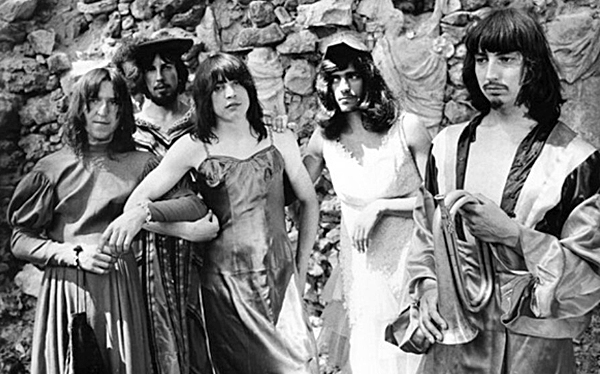
The album was dark and disconcerting, reflecting life under a humorless totalitarian regime. It mixed Gothic psychedelic rock with freeform jazz, using electric violin and theremin for highlights. In 1976 the regime arrested the Plastics and put them on trial for “organized disturbance of the peace.” Four of the defendants received prison sentences. This heralded, not the demise of The Plastic People of the Universe, but the communist regime. Which brings me to the following point.
The trial and imprisonment of The Plastic People galvanized Czechs against the Stalinist brutes that ruled them. Czech intellectuals viewed the needless repression of the band as a major assault on artistic expression; notable Czechs of different convictions and professions gathered together to write a statement on universal human rights they titled Charter 77. Published on Jan 6, 1977, one of its initial 242 signatories was the avant-garde playwright Václav Havel.
What the communist regime said of Charter 77 might sound familiar to readers. The document was called “anti-state” and “anti-socialist,” and its signatories were slandered as “traitors and renegades.” Those who signed were hounded by secret police, and basically forced into internal exile. Copies of the charter were circulated by way of samizdat, self-published texts written by hand or typewriter—itself a crime against the state.
Finally, on Nov. 17, 1989, the Czech “Velvet Revolution” began; it was a massive non-violent upheaval of all sectors of society. After huge protests for democracy and a national general strike for the same, the leadership of the Communist Party resigned; days later the party was dissolved. A new government was sworn in on Dec. 10, and Václav Havel was elected president on Dec. 29, 1989. The hippie band won the day while the commies bit the dust.
With few caveats, I always held the position that we must separate art from its creator. Often times sublime art springs from debauched or unsavory characters. That is the miracle of art. Over the decades I have treasured paintings, literature, and music created by people I did not like or agree with. On rare occasion, if I was confronted with something I found truly detestable, I did what I previously suggested, I would not purchase it. I would ignore it. I have never advocated censorship, which I consider to be positively un-American.



